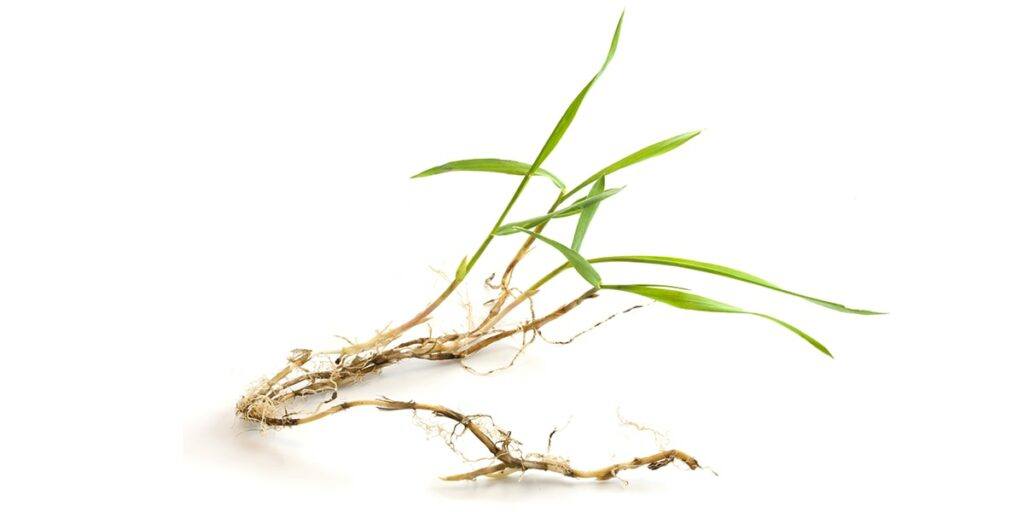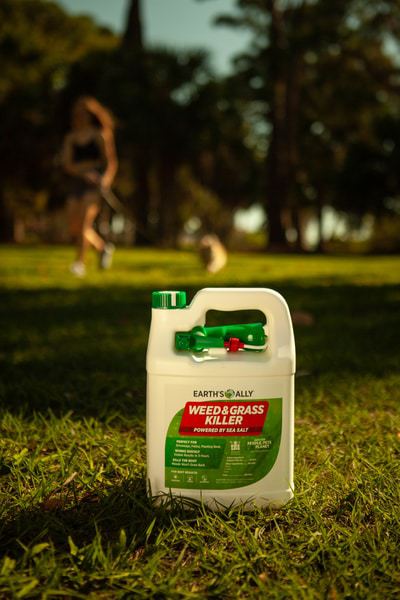
By Angelo Randaci, Earth’s Ally Horticulturist
Angelo’s passion for plants has led him to explore many areas of horticulture including research, grounds management, technical training, design and nursery management.
What is crabgrass and how did it get here?
Crabgrass seeds were brought to the United States from Europe by immigrants. Early settlers grew the plants, harvesting the nutritious seeds as a grain. In the mid-1800s, the US Patent Office introduced crabgrass seeds to grow on as animal forage during a time when livestock numbers were increasing, and good forage was needed. Crabgrass was planted as forage into the 1940s. It eventually escaped cultivation, taking up residence in cultivated fields and disturbed locations throughout the United States. There are at least 30 different species of crabgrass however, the most common types in North America are hairy crabgrass (Digitaria Sanguinalis), and smooth crabgrass (Digitaria Ischaemum). Both species are similar, and control methods are the same.
Crabgrass is a very tough, persistent drought-tolerant weed. It flourishes in the toughest growing conditions. In lawns, it maintains a low profile and is adaptable to mowing heights. Plants can produce seeds with mower blades set as low as ½ inch. The plants hold up well to heavy foot traffic, even better than the toughest of lawn grasses. Crabgrass is not only a problem in lawns. It is a prolific grower in gardens, orchards, and waste places as well. Crabgrass can be a difficult weed to contend with but with a little understanding of their life cycle and identification features, control is possible.
Crabgrass Control and Identification: Seedlings, Habit and Control
It is important to identify crabgrass because control methods are different for the different species of weedy grasses. Some are annuals like crabgrass, but others are perennials. There are also differences in root structures as well as the habits and preferences of different grasses. Misidentification can cause failure to control and even lead to the multiplication of unwanted weeds.
Life Cycle – The life cycle is a simple one. Crabgrass is an annual warm season grass. Seeds germinate, the plant grows during warm months, and dies after a frost, all during the same year. Before the plant dies, it produces seeds for next year. Seeds are dormant for a short period during cold months and germinate when soil temperatures reach 55°F degrees or so. Then the cycle begins again; seeds germinate, plant grows, sets seed for next year, then dies. In tropical climates, it may grow as a perennial, flowering and setting seeds all year.
Seedlings – When seedlings emerge, they resemble small corn plants. Crabgrass seedings have lime green colored broad leaves as opposed to the thinner, darker leaves of other grasses. Because Crabgrass is a warm-season grass, seedlings emerge whenever soil temperatures in your area reach 55°F degrees or above. A grass persisting through cold months will most likely be a perennial cool-season grass. This is a good identifying feature if you live in areas receiving frosts because if you see plants in early spring that survived the winter, they will be a cool season grass and not crabgrass.

Habit – Crabgrass habit is distinctive. It has a prostrate habit, almost hugging the ground in a single clump. The stems radiate from a single root in the center of the plant, but roots develop at nodes along the prostrate stems. You will often see a reddish hue in the center of the clump. Crabgrass stems do not have underground runners. If you pull the plant out of the soil and it has long-running underground stems, it is not crabgrass. Crabgrass thrives in heat and is often found growing along the edges of lawn areas where soil meets the pavement or wherever the soil is warmest.
Crabgrass Control
The most common question regarding crabgrass control: how to get rid of crabgrass? Controlling crabgrass involves removing the adult plants before they set seeds which can remain viable for years in the soil.

An effective crabgrass killer is hand pulling. If hand pulling, water the area first to soften the soil. Uproot crabgrass with a tool or hand pull. A claw type weeder works well.
Crabgrass seeds require ample sunlight for germination to occur. Without adequate sunlight, the seeds will remain dormant. If in a garden situation, practice no till methods to avoid bringing up crabgrass seeds to the surface.
For a safe alternative to glyphosate or other harsh herbicides, you can spot-treat crabgrass patches with a weed killer like Earth’s Ally. It is formulated with sea salt, soap and vinegar. This solution is safe for use around children and pets.
We’d love to hear how Earth’s Ally is helping you tame troublesome weeds. Share your experience and stay connected with the #EarthsAlly community on Facebook, Instagram and Twitter for access to our latest blog posts, giveaways and exclusive promotions.
